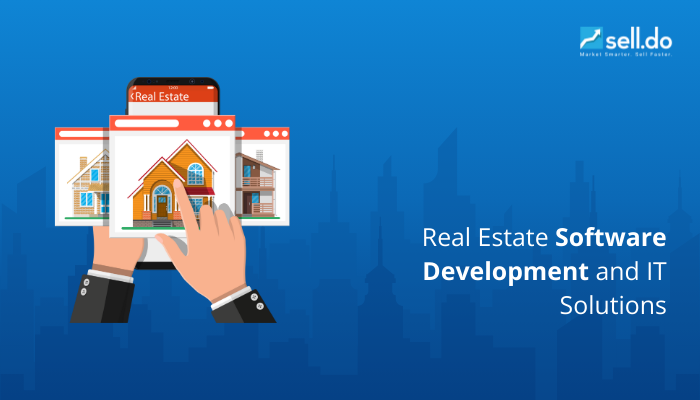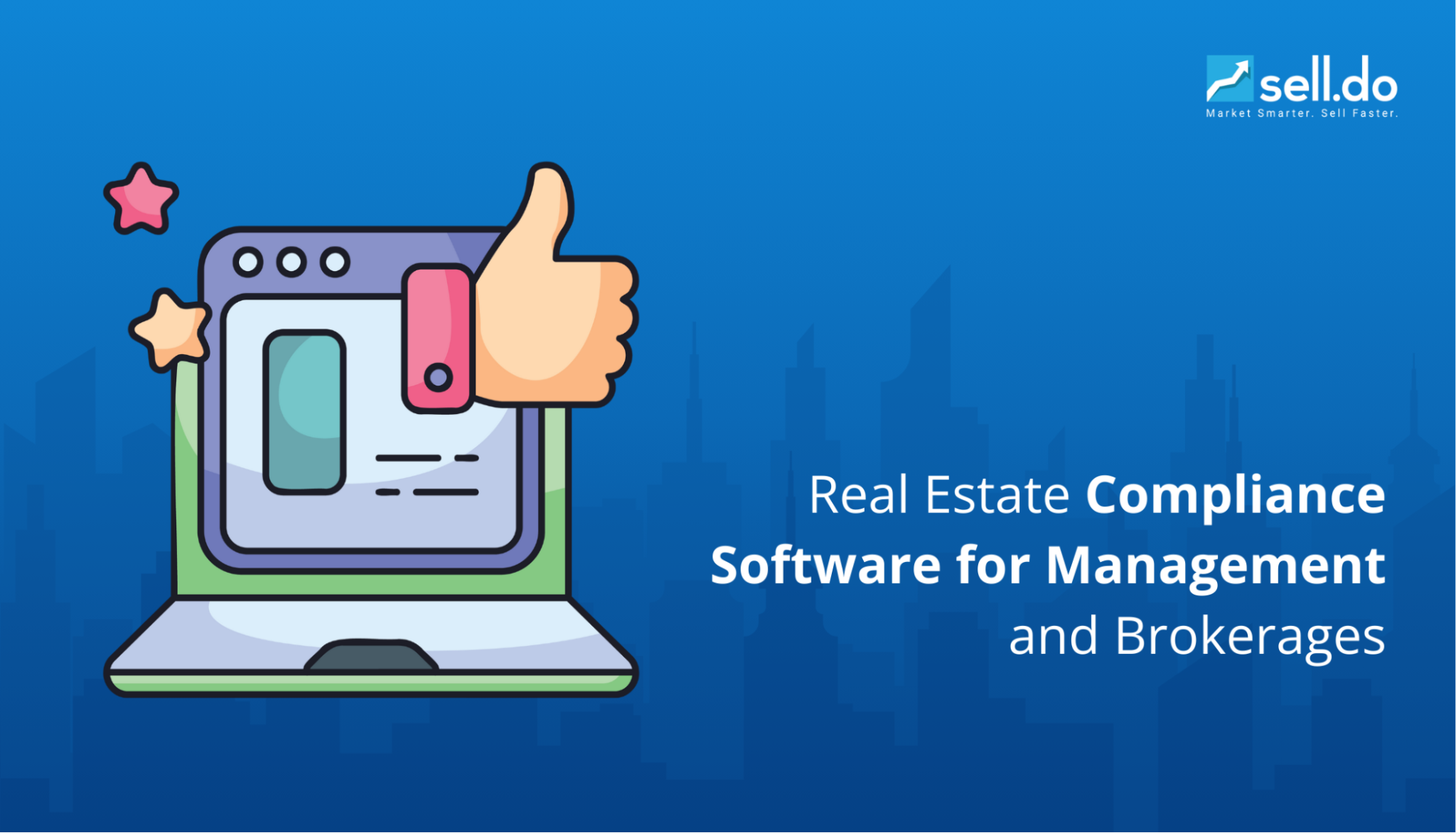Every successful real estate business thrives on a well-thought-out sales and marketing strategy. For brokers, agents, and developers alike, it's not just about finding leads—it’s about nurturing them, closing deals, and building lasting relationships. But here’s the truth: even the most promising opportunities can slip through the cracks without a structured sales planning process.
Think of your sales plan as the blueprint for success in an industry where competition is fierce and customer expectations are ever-evolving. It bridges the gap between your goals and actionable results, ensuring your efforts are focused and effective. In this guide, we’ll explore how to master the sales planning process to help you maximize efficiency, close more deals, and position your real estate business for sustained growth.
Step 1: Start by Understanding Your Target Market
Knowing your audience's needs and preferences ensures your sales and marketing strategy for real estate are tailored for maximum impact and engagement.
Identify Your Ideal Clientele
- Demographics: Determine factors like age, income, family size, and occupation.
- Location Preferences: Know whether clients are looking for urban, suburban, or rural properties.
- Budget Ranges: Understand the price points that appeal to your audience.
- Purpose of Purchase: Identify whether they’re buying for personal use, investment, or rental income.
- Preferred Features: Consider factors like amenities, floor plans, or proximity to schools, offices, and transportation.
Analyze Market Trends
Keeping up with market trends allows you to stay ahead and adapt to changes effectively. Here’s how you can keep yourself updated:
- Stay Updated on Local Demand: Monitor which property types (e.g., apartments, villas, or commercial spaces) are currently in demand.
- Track Pricing Trends: Keep an eye on average property prices and rental yields in your target areas.
- Understand Buyer Sentiment: Research client expectations and key motivators for purchasing or renting.
- Follow Government Policies: Stay informed about policies affecting real estate, such as subsidies, tax benefits, or housing schemes in India.
- Leverage Tech Tools: Use real estate CRM tools like Sell.Do to analyze customer behavior and gain insights.
Conduct Competitor Analysis
Conducting a competitor analysis is essential for identifying opportunities to stand out in the market. By studying how competitors attract and engage their clients, you can gain insights into effective strategies and areas needing improvement. Look at their marketing approaches, customer service, and unique selling points. Analyze their weaknesses or gaps—such as limited service options, outdated technology, or inconsistent follow-ups—and position your offerings to address these shortcomings.
Our blog: Conducting Real Estate Market Research: Tools and Analysis contains all the information you need to start your research.
Step 2: Setting Clear Objectives
Clear objectives direct your sales and marketing efforts, ensuring every action contributes to achieving your business goals.
- Define Specific Goals: To achieve success, you need to establish clear, measurable sales goals. Whether it's selling a certain number of properties, increasing lead conversion rates, or boosting website traffic, these targets should be quantifiable. For instance, aim to sell 30 properties within the next quarter or lease 10 commercial spaces by the end of the year.
- Align Objectives with Business Vision: Your sales goals should support and drive your overall business vision. Suppose your real estate business is focused on expanding into new geographic areas. In that case, your sales objectives should reflect this, such as targeting a specific number of new leads in those areas or increasing local brand awareness.
Step 3: Creating a Unique Value Proposition
A strong Unique Value Proposition (UVP) is essential to distinguish your real estate business in a crowded market. It highlights why clients should choose you over competitors by emphasizing your unique strengths and benefits.
- Differentiate Your Services: Focus on the distinctive features of your real estate offerings. Whether it's your in-depth knowledge of a specific market, access to exclusive properties, or a personalized client approach, these elements can set you apart and attract clients looking for something special.
- Communicate Benefits Clearly:Once you've identified your unique strengths, clearly communicate them to your clients. Explain how your services will solve their challenges, whether it’s offering more value for money, a smoother transaction process, or better investment opportunities.
- Leverage Client Testimonials:Another effective way to communicate your value is through testimonials from satisfied clients. Positive reviews and success stories help build trust and show potential clients that you deliver on your promises.
Step 4: Develop a Comprehensive Marketing Plan
A comprehensive sales and marketing strategy for real estate combines both online and offline methods to maximize your reach and attract potential clients. By integrating multiple approaches, you ensure that your marketing efforts are diverse and effective.
- Online Presence: Start by building a user-friendly website that showcases your property listings, services, and client testimonials, as 96% of home buyers search for their dream home online. This website will serve as your primary digital hub..
- Social Media: Use social media platforms like Facebook, Instagram, and LinkedIn to engage with clients, share market insights, and build a community around your brand. With 90% of real estate agents active on Facebook, 52% on Instagram, and 48% on LinkedIn, these platforms are invaluable for reaching and interacting with potential clients.
- Content Marketing: Start a blog to provide valuable insights into the real estate market, share tips for buyers and sellers, and position yourself as a trusted industry expert. Consistent, helpful content builds credibility and attracts organic traffic.
- Email Campaigns: Develop targeted email campaigns to nurture leads and stay connected with past clients. Use personalized content to provide updates on new listings, market trends, and exclusive offers. Real estate email campaigns boast an impressive ROI, making them a cost-effective way to maintain relationships, encourage repeat business, and drive conversions.
- Paid Advertising: Use Google Ads and Facebook Ads to reach a wider audience. These platforms allow you to target specific demographics and attract potential clients who are actively searching for real estate services.
- Offline Campaigns: Don’t neglect offline marketing. Host open houses, sponsor local events, or collaborate with community businesses to enhance visibility and create personal connections.
A mix of these strategies will give you a well-rounded marketing plan that drives both online engagement and offline leads.
For in-depth information, you can go through our blog Social Media Marketing Strategies for Real Estate Agents.
Step 5: Implementing Technology
Leveraging the right tools can make your processes more efficient and improve your client interactions. Here are a few tools to help you in your sales and marketing strategy for real estate:
- CRM Systems:Invest in a dedicated real estate CRM like Sell.Do to streamline lead management, track client interactions, and nurture prospects effectively. Realtors using CRM systems have seen a 41% increase in lead conversions, highlighting the power of these tools. They automate repetitive tasks, centralize client information, and ensure smooth communication, empowering you to focus on building relationships and closing deals more efficiently.
- Virtual Tours: Enhance property viewings with virtual tours and drone photography. These technologies provide clients with immersive experiences, allowing them to explore properties remotely in detail.
- 3D Tours and Augmented Reality (AR):Take property marketing a step further with 3D tours and AR. These tools enable clients to visualize spaces interactively, making it easier for them to imagine living or working there. Such innovations can boost buyer confidence and shorten decision-making times.
- Advanced Analytics: Use analytics tools to gain insights into market trends, client preferences, and campaign performance. Data-driven strategies ensure you are targeting the right audience with the most effective approaches.
Step 6: Building a Strong Network
Building a strong network amplifies your sales and marketing strategy for real estate by unlocking new opportunities and fostering credibility. Strategic connections can drive referrals, partnerships, and long-term client relationships that fuel sustained growth.
- Partner with Local Businesses: Collaborate with local enterprises like interior designers, moving companies, and property maintenance services. These partnerships can create a mutually beneficial ecosystem, offering value-added services to your clients while increasing your market visibility.
- Attend Industry Events: Participate in real estate forums, seminars, and networking events to connect with industry professionals, gain insights into market trends, and discover potential collaboration opportunities. Staying active in these circles positions you as a knowledgeable and credible player in the field.
- Join Real Estate Associations: Consider joining real estate associations or groups to build connections with like-minded professionals. Memberships often provide access to resources, training, and industry updates that can keep your business ahead of the curve.
Recommended: Strategies to Generate Free Real Estate Leads.
Step 7: Monitoring and Adjusting Your Strategy
Success in real estate requires a proactive approach to evaluating and refining your sales and marketing strategy. Consistently tracking and adjusting ensures your efforts remain effective and aligned with market needs.
- Track Performance Metrics: Regularly monitor key performance indicators (KPIs) such as lead conversion rates, client acquisition costs, and marketing ROI. Use analytics tools to gain insights into what’s working and identify areas needing improvement.
- Adapt to Market Changes:Stay attuned to shifts in market trends, buyer behavior, and industry developments. Adjust your approach to remain competitive, whether by revisiting pricing strategies, exploring new marketing channels, or refining your outreach methods.
- Gather Client Feedback:Collect client feedback to understand their experience and identify ways to enhance your services. This not only builds trust but also provides actionable insights to refine your strategies.
By following this step-by-step process, you can create a well-rounded sales and marketing strategy for real estate that drives growth, improves client engagement, and positions your business for long-term success.
Additionally, to truly capitalize on these efforts, you need a robust CRM in place to capture, nurture, and manage them effectively. This is where Sell.Do steps in.
Why Sell.Do is the Ideal CRM for Your Real Estate Business

Real estate professionals face common challenges such as poor lead tracking, lack of lead nurturing, siloed systems, and inefficient communication. These issues hinder collaboration, lower conversion rates, and make it difficult to provide seamless client experiences.
Unlike generic CRMs, Sell.Do is specifically designed for real estate, offering tailored solutions to address these challenges. With ISO 27001 certification and 100% lead capture, Sell.Do ensures that your data is secure and that no lead slips through the cracks.
Key Features of Sell.Do
- Omni-Channel Communication: Engage leads via WhatsApp, SMS, email, IVR, and more.
- Lead & Inventory Management: Track and manage leads, negotiations, and property listings effortlessly.
- Automation & Analytics: Leverage automated workflows and data insights to optimize your sales strategy.
- Document Management: Streamline document handling with digital signatures and eKYC integration.
Sell.Do is the trusted CRM for over 1000 developers, providing the tools needed to increase sales and enhance client relationships.
Conclusion
Mastering the sales planning process is crucial to achieving success in real estate. By setting clear objectives, differentiating your offerings, leveraging technology, and building strong networks, you can establish a solid foundation for growth. A well-structured sales and marketing strategy for real estate helps you attract leads and drive business. However, capturing and nurturing those leads can be challenging without the right tools in place.
That’s where Sell.Do comes in. As a dedicated real estate CRM, it allows you to track leads, automate communication, and streamline your sales process. With features like 100% lead capture, detailed reporting, and an integrated approach, Sell.Do ensures your leads are effectively nurtured, helping you close more deals and achieve sustained success.
Try Sell.Do today to take control of your lead management and boost your real estate business!






Leave a comment
Comments (0)
Be the first one to comment.